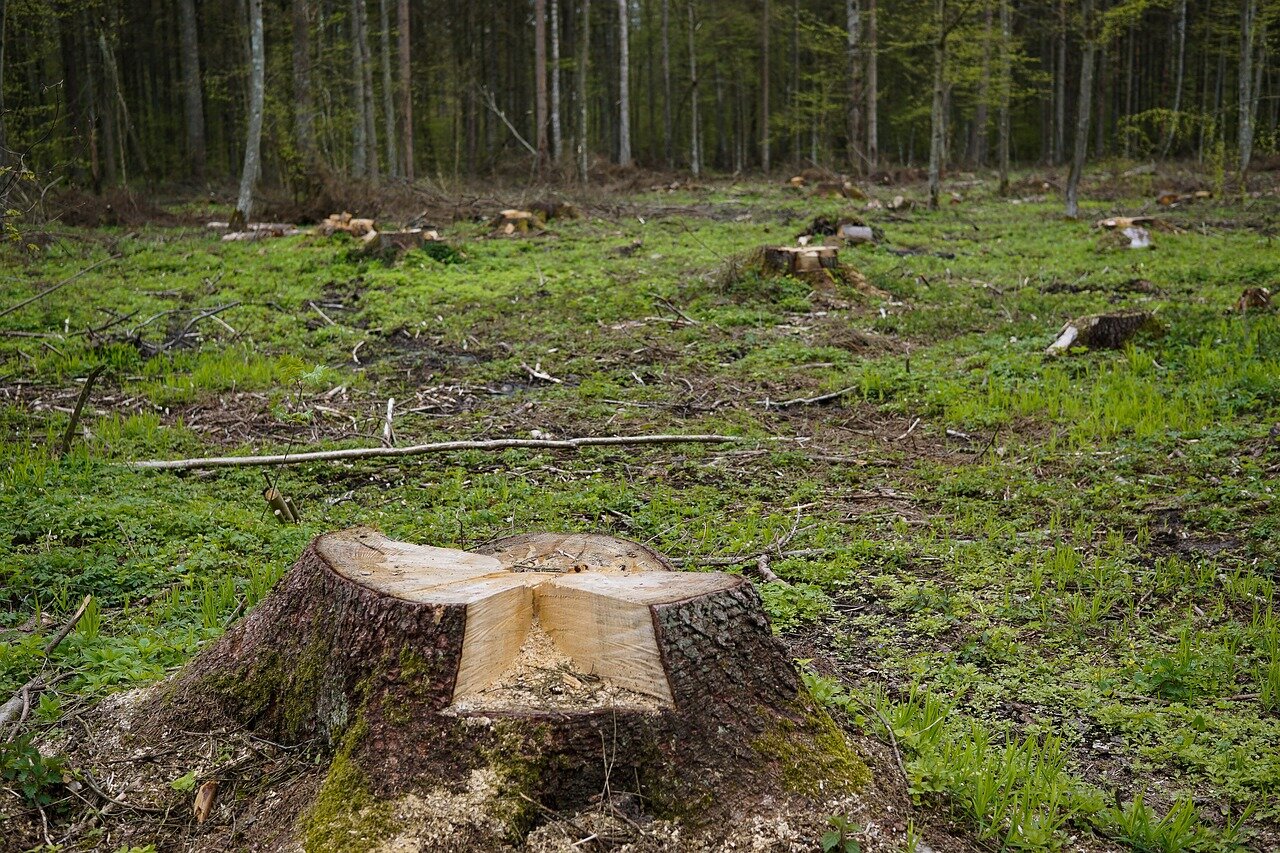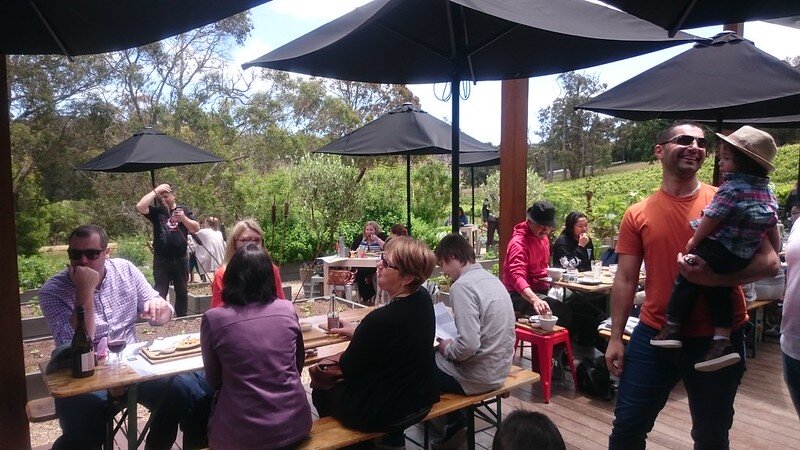Why Communities Must Break Out of the Resource Trap
This story is part of an in-depth series on the economic challenges facing resource-based communities, and strategies that can help build lasting prosperity. Read part two here.
Miners posing outside of the Tamarack, Michigan, mineshaft. Image via U.S. National Archives.
We all want to live in a prosperous place, one where our hard work creates a better life for ourselves, our families, and the next generation. In many instances, people are willing to sacrifice, to put off immediate satisfaction, if it means a more prosperous tomorrow. People living in resource-based communities—places where people mine, drill, log, farm—are no different. In fact, in most places where the people labor with natural resources, hard work and sacrifice are a way of life.
Yet, despite the wealth they create for others, they rarely share in it. Resource-based communities rarely experience the prosperity their labor makes possible for others. Financially, over the long run, they are often some of the poorest places in North America.
It doesn’t have to be this way.
At Strong Towns, we’ve created this series of articles to help resource-based communities grow stronger and more prosperous. We know that success is possible, no matter a community’s size or resources. The steps we outline have not only been proven effective, they are available to any place that wants to pursue them. There is no quick fix, but nobody lives in a resource-based community looking for the easy path. Easy is not who you are.
If you want your place to be stronger and more prosperous, read on.
Measuring Success: How do we keep our kids from leaving?
The measurement of success that comes up over and over again in resource-based communities is simple: Will the next generation stay or leave? Do our kids have enough of a future here to stick around and make a life, or will they leave and never come back?
It’s a simple measure, but there is a lot wrapped up in it. A lot of hope. A lot of tension. Here are some of the comments we often hear in resource-based communities:
“I find value in hard work and a good life, but not enough value to watch my kids stay here and do this. ”
“I want them to continue here, but I know they need to leave if they are to have a better life. ”
“I’m proud of what I do, but I am ashamed for my kids to follow this path.”
“I’d love to have my kids continue ranching, but there’s just no money in it.”
“I’m sacrificing for them so they can have something better. I just wish that better could be here. I wish there was a good reason for them to stay.”
Stay and live a hard life with fleeting hope of really getting ahead, or leave—escape to someplace else—and start over in a new place. Are these the only choices for our kids and their future?
Asking that question reveals the losing battle. Do we want the community to experience a fast or a slow decline? There has to be another option. And there is, but it begins with different questions: How do we create a life worth living here, where more of the fruits of our labor stay in our community and improve our quality of life?
How do we build a community where our kids see a better future for themselves? The answer requires growing beyond the resource trap.
The Resource Trap
For any community, having natural resources can be a blessing, but it can also be a curse. The blessing comes from the jobs and opportunities the resources provide (opportunities to mine, drill, log, or farm) but the curse comes when the community becomes trapped in the resource economy, unable to grow beyond it.
This is easy for Americans to see in countries like Venezuela or Saudi Arabia, where abundant oil has allowed their governments to persist, despite not meeting the needs of their people. Glitzy projects and occasional subsistence handouts have allowed those places to limp along, with high unemployment and low family wealth, despite the astounding amount of resources being brought up from the ground. It is often more difficult for us to see this effect in our own places. We are close to it. The urgency of today’s needs, which are real and overwhelming, crowd out that longer term downward pressure. The drag on local prosperity in a resource-based economy is only visible when measured in generations and stacked up against the hope for the future.
Image via Pixabay.
The mechanisms of the resource trap are fairly simple. They begin with a commodity (oil, coal, wheat, timber, corn, etc…) that trades in a global marketplace. If your community can produce a commodity, you can export it to the outside world and import capital. You produce something people want and you get paid for it. This is a really easy way to acquire wealth. Yet, because you are producing a commodity and because it is traded on massive exchanges, there are very few ways to differentiate one provider from another. There is nuance around quality and grade but, for the most part, the reason there can be such large markets is that a barrel of oil is a barrel of oil. Coal is coal and corn is corn, regardless of what region it comes from.
This means that, instead of great customer service or some other value-added feature, the only way to compete with a commodity is on price. If your corn and my corn are essentially the same, whoever can produce it for the lowest price is in the best position to make the sale. The ways to a lower price are well known. Industry consolidation takes ownership out of local hands and transfers it to increasingly larger and more distant organizations. Systems become more efficient and purchases can be made in bigger quantities from outside the community.
The greatest cost savings come from labor efficiencies. While the employees that remain may be well compensated by community standards, there are way fewer of them. Perhaps more importantly, the local support industries are now also gone. All the accountants, lawyers, bankers—not to mention the mechanics, technicians, and sales people—that historically kept the town running are no longer needed. Those tasks are handled elsewhere. The capital that used to stay and be passed around the community, growing jobs and opportunity, now goes elsewhere. The community that works hard to produce resources for others now finds itself starved of resources.
In a resource trap, the community is a cost to reduce. Jobs and wages are expenses to be trimmed. Opportunities for growth and investment are a distraction to the core goal of efficiency. Local history and culture are barriers to be overcome.
In a Strong Towns approach, the community is where we grow our wealth. Jobs and wages are the capital that seed local prosperity. Opportunities for growth and investment are the key to building local wealth and capacity. Local history and culture are the key ingredients of community collaboration.
Image via Flickr.
This is a vital shift in mindset:
Resource Trap - “The community is a cost to be reduced.”
Strong Towns - “The community is where we grow our wealth.”
There are only two ways the resource trap ends. In the first, the community is slowly squeezed into an increasingly marginalized position, one where it grows more and more dependent on outside assistance and quick fixes to keep things going. When the resource is gone, the place disappears, not having the capacity, let alone a good reason, to endure.
The other ending is for the community to break out of the resource trap, to reinvent itself and grow its own capacity, to become a place that does not depend on the resource for its survival, to become a Strong Town.















The generational ranch model has been wobbling since WWII, but here's how one small community in Montana is keeping grazing land as working lands, as well as bolstering opportunities for young producers.